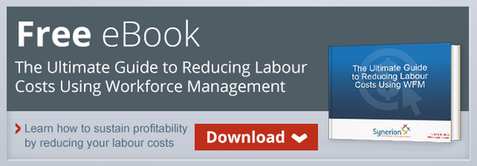 Many business owners wonder how to create a time off policy, and this matter can be complicated. Fortunately, you do not have to reinvent the proverbial wheel, as time off policies have been in place for most industries for a long time. Through studying what has worked, and not worked so well for other companies, you can craft your own policy that can aide you in a host of HR-related matters.
Many business owners wonder how to create a time off policy, and this matter can be complicated. Fortunately, you do not have to reinvent the proverbial wheel, as time off policies have been in place for most industries for a long time. Through studying what has worked, and not worked so well for other companies, you can craft your own policy that can aide you in a host of HR-related matters.
Search Your Competitors
There are many ways to gain an understanding of what your competitors do. For one, you can ask their employees, who may still have left over HR books lying around. You can call their HR department pretending to be an employee, and asking for an attendance policy book to be sent to you. If you are not so devious, you can search through the competitor's website to see how much of their attendance policy they are willing to share with the outside world. Public companies tend to be more open about this, but sometimes even privately-held companies have some transparency.
Be Consistent
The most important rule to remember when it comes to building your attendance policy is to remain consistent across the board. Do not allow more unexcused absence for one group than for another, and be mindful of the laws regarding certain protected times such as childbirth or the death of an immediate family member. Also be aware that lateness, particularly when it is only by a few minutes, may be excusable on account of situations such as traffic or road closures. Putting in an understanding of extenuating circumstances, such as giving less attendance "points" for being under 15 minutes late than for exceeding this number, can show reasonableness while still keeping the system consistent.
Identify Your Needs
How much time do your employees realistically need to be in your office working? While the standard response is "at least 40 hours a week, and probably more than that ideally," how much of that time is actually productive? And how much of an employee's productive time that benefits your company actually needs to be spent in the office? In some cases, this is all of it, such if the work is physical or requires on-hand inspections of equipment. In other cases, tracking time that benefits your company can be an entirely different matter altogether, and require a looser definition of what constitutes work time versus free time. In cases where an employee is able to be productive on the road, or even when a given personality type thrives on this mode of "multi-tasking," putting that into the policy can be useful. It is important to remember that during time off, many employees recharge and come back sharper and with fresher ideas.
Balance Your Needs Against Your Employees Needs
Do some employees work better from home? If so, can they work from home and accomplish as much for you as they could in your workplace? If the answers to these questions is in the affirmative, including greater flexibility into your time off policies. For example, allowing for "mental health days" when an employee is having a difficult time in their personal life can be good for morale, as well as allowing employees to handle their personal struggles away from the workplace. It is difficult to completely shut out important personal matters, even for consummate professionals.
Use Software Intelligently
The use of clocking software can chronicle precisely how well employees use their time off, as well as their attendance. Using the right software lets you make big decisions instead of trying to decipher the small details.
